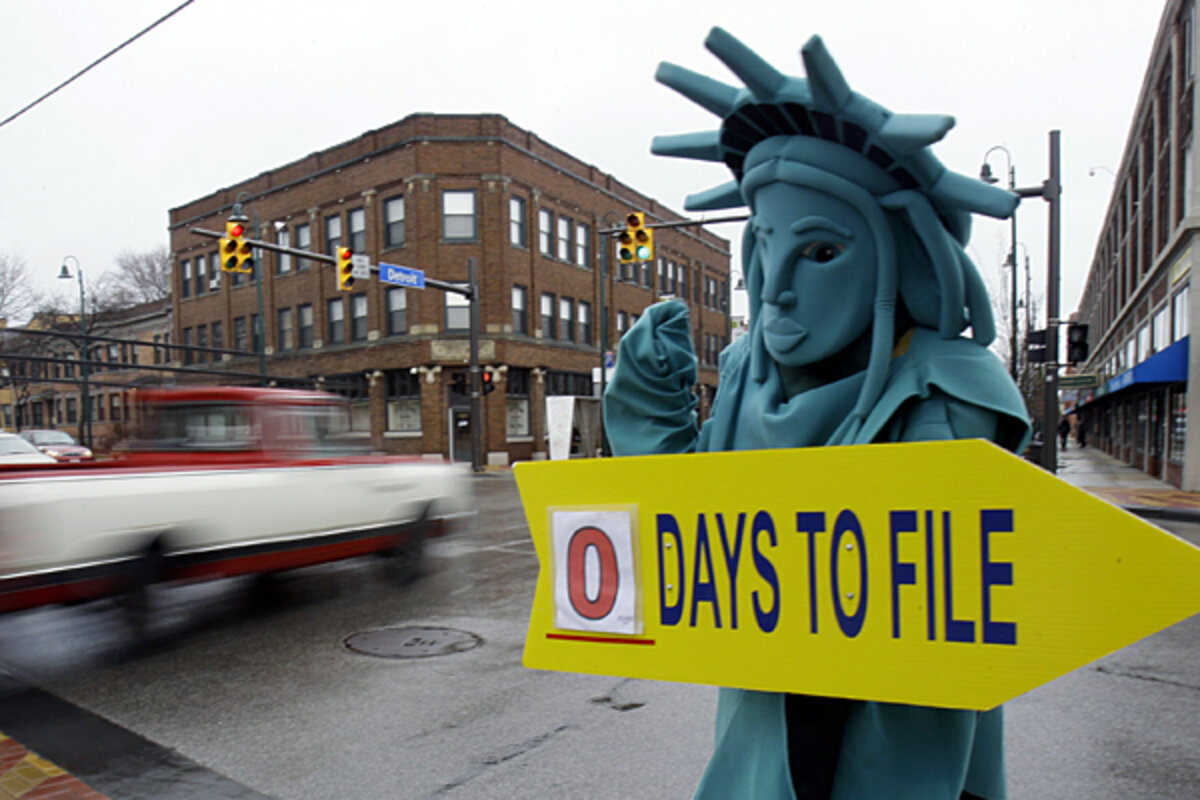What the Joint Tax Committee really said about tax reform
Loading...
On Friday, congressional Democrats released the results of a of base-broadening, rate-cutting tax reform by the Joint Committee on Taxation. For reformers everywhere the results seemed exceedingly grim: By eliminating all deductions, Congress could reduce tax rates by only a puny 4 percent without adding to the deficit. The top tax rate, for instance, would drop from 39.6 percent to just 38.2 percent.
In other words, if JCT is right, lawmakers would have to take the political heat for going after popular deductions such as those for mortgage interest or charitable giving and they best they’d have to show for their pain would be a tiny reduction in rates.
These estimates of what would happen under one theoretical tax rewrite sent reformers, not to mention the Romney campaign, into a frenzy. How could Romney pay for his 20 percent across-the-board rate cut if JCT could only get rates down by 4 percent? How could the bipartisan fiscal plans we’ve seen over the past couple of years both lower rates and cut the deficit if eliminating tax expenditures generates so little money? Even my colleagues at the Tax Policy Center, who have estimated much larger effects of broadening the tax base, would be very wrong.
The JCT estimates matter because, unlike all those other groups, including TPC, the Joint Committee is the official congressional arbiter of tax proposals. If JCT says your tax plan doesn’t generate enough money to pay for the rate cuts you want, it doesn’t. End of story.
But a close look at what JCT did tells a somewhat different tale, and gives reformers some much needed oxygen. The congressional staffers got these results because they took a very narrow view of base-broadening, and because they started from a different (though not surprising) place. The JCT:
- Starts with a “current law” baseline. Thus it assumes most of the tax cuts enacted over the past decade have expired. Thus, for instance, rates are back up to where they were in 2000 and the Alternative Minimum Tax is no longer patched, thus hitting millions of middle- and upper-middle income households. By contrast, many other tax rewrites assume today’s tax law is made permanent prior to reform, which allows them to dedicate more dollars to rate reduction.
- Repeals the AMT and limits on itemized deductions and personal exemptions for high-income households. This alone eats up over $1 trillion.
- Eliminates itemized deductions and the tax exclusion for newly issued municipal bonds but leaves untouched other big ticket tax preferences such as the exclusion for employer-sponsored health insurance, tax credits, and tax breaks for contributions to retirement and pension plans.
- Extends the current, relatively generous versions of the earned income and child credits, at a cost of over $400 billion.
- Taxes capital gains at ordinary income rates, which loses revenue since investors will take fewer gains in response to those higher rates.
Because JCT starts with higher rates, it may generate more from eliminating deductions than other plans. Still, while the JCT experiment would produce about $2.6 trillion from its base-broadeners, Marc Goldwein of the New America Foundation figures only about $700 billion is used for rate reduction.
The JCT plan is very different from other tax reform proposals. For instance, Alan Simpson and Erskine Bowles, the chairs of President Obama’s fiscal commission, designed a reform that could get rates as low as 28 percent, but did it by eliminating nearly all tax preferences (not just deductions) and scaling back the few that survived.
So, it turns out, JCT doesn’t contradict groups like the Rivlin-Domenci Commission or Simpson-Bowles, it merely uses different assumptions.
Does it discredit Romney’s plan, as Democrats hope? Romney’s spokeswoman said on Friday that the JCT study “says nothing about the pro-growth tax reform proposed by Mitt Romney.” Well, that may be true. But since Romney won’t tell anyone what his plan is, there is no way to know.
The JCT study is best read at 50,000 feet: There are many theoretical models for base-broadening, rate-cutting tax reform, and some efforts to squeeze tax preferences will generate a lot more money than others. But however you do it, tax reform is hard. It isn’t impossible, and it is surely worth trying. But it is very hard.




